Metal Roll Formed Profiles
LK Die Casting Machine / 2024-10-15 10:27:36
Metal Roll Formed Profiles
2024-10-15 by Cherry
Introduction
As a vital equipment in industrial production, the performance
and efficiency of die-casting machines depend largely on the
materials and components used, and the emergence of metal roll
forming profiles has undoubtedly injected new vitality and
vitality into the field of die-casting machines.
With the continuous development and innovation of manufacturing
industry, the application of metal roll-forming technology
in the field of die-casting machines is becoming more and
more extensive. As an indispensable equipment in modern manufacturing,
die casting machines are responsible for injecting molten
metal into molds through high pressure to form various complex
shapes of parts.
The emergence of metal roll-forming profiles not only improves
the performance of die-casting machines, but also optimizes
production efficiency and product quality in many aspects.
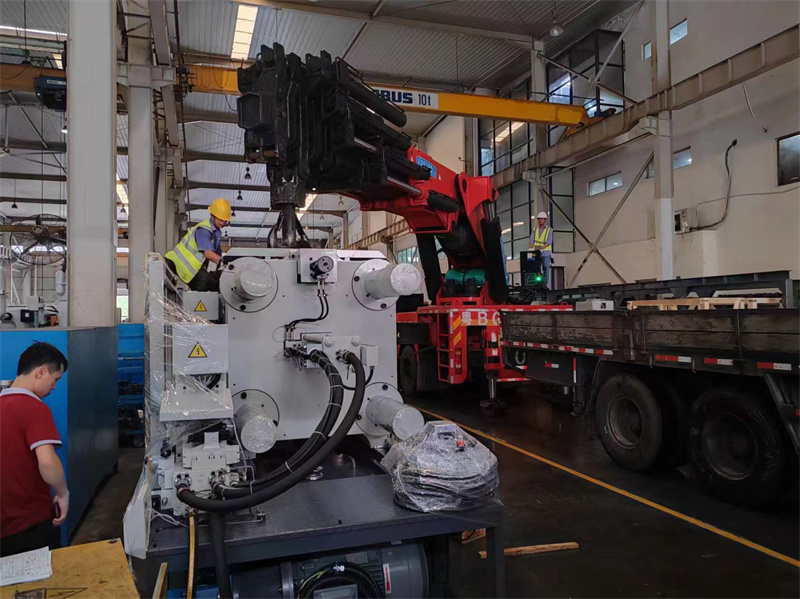
This article will focus on the practical application of metal
roll-forming profiles in die-casting machines, and deeply explore
its technical advantages, process flow, and future development
trends.
Working principle and importance of die casting machine
1. Working principle of die casting machine
A die-casting machine is a device that injects molten metal
into the mold cavity through high pressure to quickly form
complex parts. It is like a precise sculptor, carving liquid
metal into workpieces of various shapes and sizes. In the
die-casting process, the die-closing mechanism of the die-casting
machine first closes the mold, and then the injection mechanism
injects the molten metal into the mold cavity at a very high
speed and pressure. After the metal cools and solidifies,
the mold opening mechanism opens the mold and takes out the
molded casting.
2. The importance of die-casting machines in industrial
production
Die-casting machines are widely used in many fields such as
automobiles, aerospace, and electronics. It is like the
cornerstone of industrial production, supporting the development
of the entire manufacturing industry. Taking the automotive
industry as an example, the aluminum alloy parts produced
by die-casting machines not only have good strength and lightweight
characteristics but also effectively improve the fuel economy
and performance of automobiles. In the field of aerospace,
the precision parts manufactured by die-casting machines are
the key factors to ensure the safety and performance of aircraft.
It can be said that the development level of die-casting machines
directly reflects a country's industrial manufacturing capabilities.
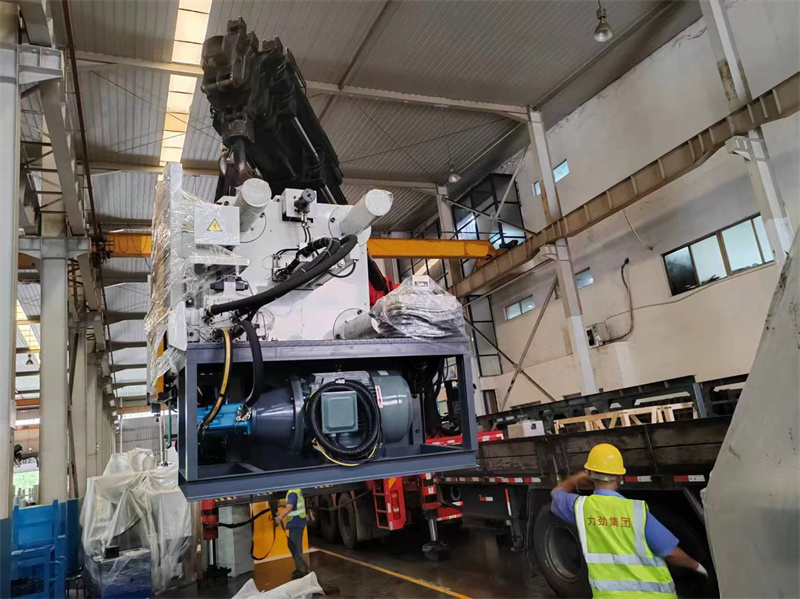
Overview of metal roll bending profiles
Metal roll bending is a technology that processes metal
strips (usually aluminum, steel, stainless steel, etc.)
into different profiles through a continuous bending process.
It uses coils as raw materials and gradually bends them into
the desired shape through multiple roller systems. This
method is particularly suitable for mass production because
it is efficient, precise, and stable. Compared with traditional
casting or forging processes, metal roll-forming profiles
have obvious advantages in material utilization, manufacturing
cost, and precision control.
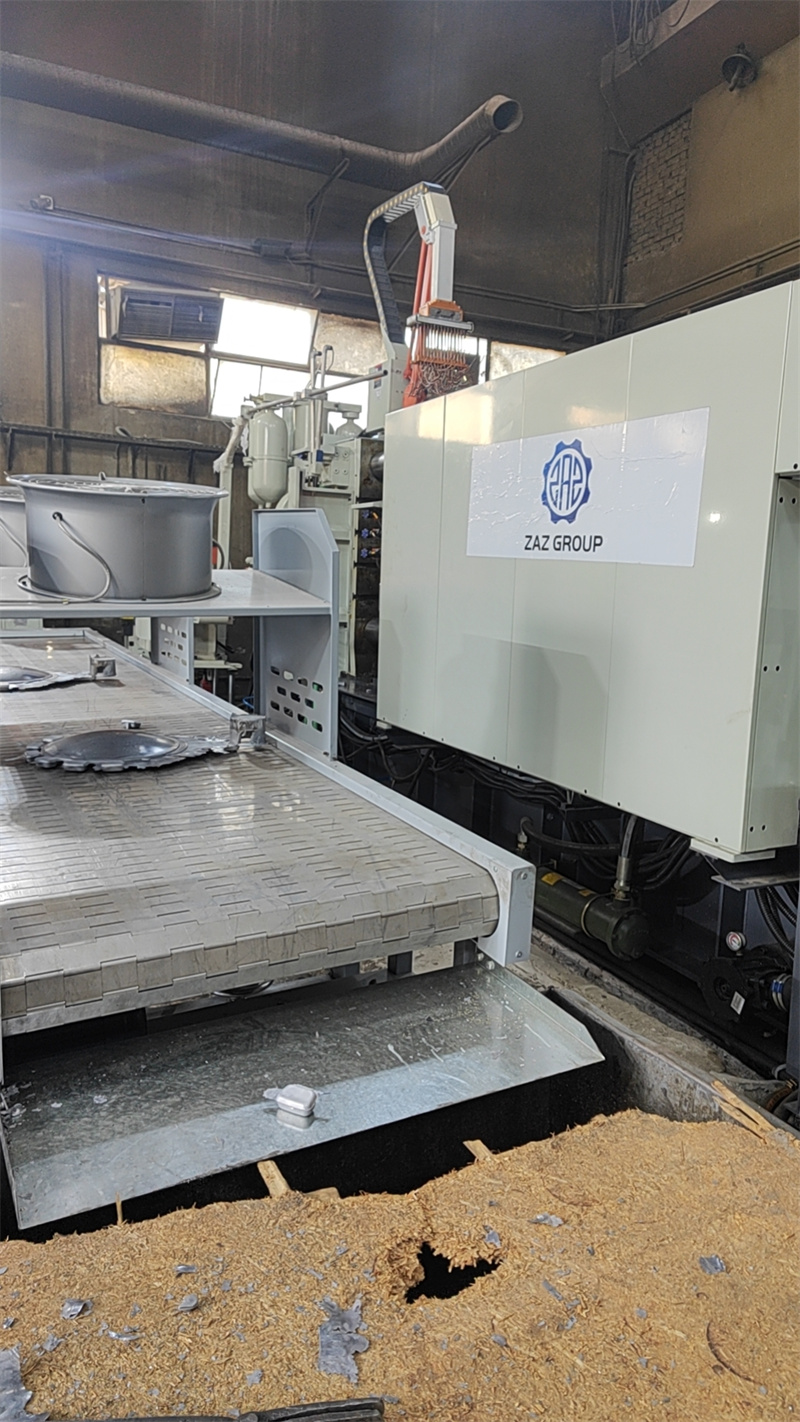
Characteristics and advantages of metal roll-forming
profiles
1. Characteristic of metal roll-forming profiles
Metal roll-forming profiles are a new type of material
made by bending and forming metal sheets or strips. It has
a unique geometric shape and structure, strong mechanical
properties, and process adaptability. Compared with traditional
metal materials, metal roll-forming profiles have higher
strength, better toughness, and lower weight.
2. Advantages of metal roll-forming profiles in the field
of die-casting machines
2.1 Improve the structural strength of die-casting machines
The high-strength characteristics of metal roll-forming profiles
enable them to withstand the huge pressure and impact force
during the die-casting process. It is like putting on a layer
of solid armor for the die-casting machine, effectively protecting
the key components of the equipment and extending the service
life of the die-casting machine. For example, in the die-casting
machine's clamping mechanism, the tie rods and the templates made
of metal, roll-bending profiles can withstand higher clamping
forces, ensure the tight closure of the mold and thus improve
the quality and precision of the castings.
2.2 Reduce the weight of the die-casting machine
In the era of pursuing lightweight, die-casting machines are
no exception. The lightweight characteristics of metal
roll-bending profiles bring new ideas to the design of die-casting
machines. By using metal roll-bending profiles to replace
traditional heavy metal parts, the overall weight of the die-casting
machine can be significantly reduced.
This not only helps to reduce the operating cost of the equipment
but also improves the response speed and flexibility of the equipment.
Imagine that a light and flexible die-casting machine is like an
agile dancer, dancing on the production line, efficiently completing
one die-casting task after another.
2.3 Optimize the structural design of the die-casting machine
The unique shape and structure of the metal roll-bending
profile provides more possibilities for the structural design
of the die-casting machine. Designers can flexibly design
various complex structures according to the working principle
and performance requirements of the die-casting machine.
For example, the die-casting machine frame is made of metal
roll-bending profiles can achieve a more compact and reasonable
layout, and improve the stability and reliability of the
equipment. At the same time, the good process adaptability of
metal roll-bending profiles also make the manufacturing
process of the die-casting machine simpler and more efficient.
2.4 Reduce the production cost of die-casting machines
From an economic point of view, the application of metal
roll-bending profiles have also brought tangible benefits
to die-casting machine manufacturers. On the one hand,
the production process of metal roll-bending profiles is
relatively simple, the utilization rate of raw materials
is high, and the material cost can be reduced. On the other
hand, due to the lightweight characteristics of metal
roll-bending profiles, the cost of die-casting machines
during transportation and installation is also reduced
accordingly.
In addition, the good wear resistance and corrosion resistance
of metal, roll-bending profiles can also reduce the maintenance
and maintenance costs of equipment, and further improve the
economic benefits of die-casting
machines.
Specific application of metal roll-bending
profiles in die-casting machines
1. Die-casting machine clamping mechanism
The clamping mechanism is one of the core components of the
die-casting machine, and its performance directly affects the
working efficiency and casting quality of the die-casting
machine. The application of metal roll-bending profiles in
the clamping mechanism is mainly reflected in parts such as
tie rods, templates, and coring columns. By using high-strength
metal roll-bending profiles to manufacture these parts, the
bearing capacity and stability of the clamping mechanism can
be effectively improved, ensuring that the mold can be tightly
closed during the die-casting process, avoiding quality problems
such as flash and burrs.
2. Die-casting machine injection mechanism
The injection mechanism is a key component for injecting molten
metal into the mold cavity. It needs to have the characteristics
of high speed, high precision, and high pressure.
The application of metal roll-bending profiles in the injection
mechanism is mainly reflected in parts such as injection
cylinders, injection rods, and injection heads. Since metal
roll-bending profiles have good wear resistance and corrosion
resistance and can withstand high temperatures and high-pressure
molten metal scouring, they can effectively improve the
service life and working reliability of the injection mechanism.
3. Die-casting machine frame and support structure
The frame and support structure of the die-casting machine
need to have sufficient strength and rigidity to withstand
great pressure and vibration while maintaining good stability
to ensure the stability and precision of the die-casting
machine during operation. The application of metal roll-formed
profiles in the frame are mainly reflected in components such
as columns, beams, and bases.
Traditionally, these components are usually manufactured
by casting or welding technology, but the emergence of metal
roll-formed profiles provide a new solution for these structural
parts. Roll-formed profiles not only have high strength but also
can achieve complex structural shapes through precise dimensional
control, reduce processing errors, and improve product consistency.
At the same time, the lightweight characteristics of this material
also help to reduce the overall weight of the die-casting machine,
thereby improving the mobility and installation convenience of the
equipment. By adopting a reasonable structural design and metal
roll-forming process, a more sturdy, lightweight, and beautiful
frame can be manufactured, improving the overall performance and
market competitiveness of the die-casting machine.
4. Guide rails and sliding parts
The guide rails and sliding parts in the die-casting machine
require extremely high smoothness and wear resistance to ensure
smooth operation in high-frequency production operations.
Metal roll-formed profiles can be effectively used to manufacture
these parts due to their excellent surface quality and
consistency. During the production process, the bent profiles
can achieve extremely small tolerance ranges, so that the guide
rails and sliding parts have higher precision.
In addition, the roll-forming process can be combined with
subsequent surface treatment processes (such as electroplating
and oxidation) to further improve its wear resistance and
corrosion resistance.
5. Cooling system and hydraulic pipeline
The cooling system and hydraulic pipeline of the die-casting
machine is also an important application area of metal roll
forming profiles. The high temperature and high pressure
environment in the die-casting process put forward strict
requirements on the heat dissipation efficiency of the cooling
system and the pressure resistance of the hydraulic pipeline.
Metal roll-forming profiles can be used to manufacture
high-temperature-resistant, corrosion-resistant, and excellent
sealing pipeline systems through precise bending and connection
design, ensuring that the die-casting machine can maintain
stable operation while producing efficiently.
6. Die-casting machine mold
The mold is a key tool for the die-casting machine to produce
castings. Its quality and performance directly affect the
shape, size, and precision of the castings. The application of
metal roll-forming profiles in the mold is mainly reflected
in the mold cavity, core and slider, and other components.
Because the metal roll-forming profile has good processing
performance and molding accuracy, it can manufacture more
complex and precise mold parts, improve the service life of
the mold and the quality of the casting.
Advantages of metal roll-forming profiles
in the field of die-casting machines
The technical advantages of metal roll-forming profiles are
that they have excellent processing accuracy, material
utilization and production efficiency, which make them widely
used in die-casting machines. The following are its main
advantages:
1. High strength and lightweight: Metal roll-forming profiles
have lighter weight while maintaining high strength, which
is a huge advantage for mobility, installation and
maintenance of die-casting machines.
2. Low manufacturing cost: Compared with traditional casting
or forging processes, the roll-forming process reduces
material waste shortens the production cycle and reduces
production costs.
3. High precision and small error: The continuity of the
roll-forming process and the precise mold design make the
finished profiles have extremely high dimensional accuracy,
which is especially important in situations where die-casting
machines require strict tolerance control.
4. Versatility: Metal roll-forming profiles are not only suitable
for manufacturing structural parts of die-casting machines, but
can also meet the requirements of hydraulic, cooling, and other
systems through different designs and processing methods,
further broadening their application range.
Development trend of metal roll-bending profiles
in the field of die-casting machines
With the continuous advancement of technology, the application
prospects of metal roll-bending profiles in the field of
die-casting machines are becoming more and more broad. In the
future, this technology is expected to achieve greater
breakthroughs in the following aspects:
1. Application of new materials and continuous improvement
of material properties
In the future, with the research and development and application
of new alloy materials, roll-bending profiles will be further
improved in strength, corrosion resistance, and processing
performance. This will bring more innovative opportunities
for die-casting machine manufacturing, especially in high-performance
equipment and special field applications.
With the continuous development of materials science, the
performance of metal roll-bending profiles will continue to
improve. In the future, metal roll-bending profiles will have
the advantages of higher strength, better toughness, lower
weight and better corrosion resistance, providing stronger
support for the performance improvement of die-casting machines.
2. Continuous innovation of the manufacturing process
Future die-casting machine manufacturing will develop
in a more intelligent and automated direction. Roll-bending
profiles have great potential for application in automated
production lines, and their efficient and precise production
methods will further improve the manufacturing efficiency and
precision of die-casting machines.
To meet the demand for metal roll-forming profiles
in the field of die-casting machines, manufacturing processes
will continue to innovate. For example, the use of advanced
laser welding technology, CNC machining technology, and
surface treatment technology can improve the manufacturing
accuracy and quality of metal roll-forming profiles, reduce
production costs and improve production efficiency.
3. Green Manufacturing and Sustainable Development
With the increasing global attention to environmental protection
and resource conservation, the material utilization rate and
low energy consumption characteristics of metal roll-forming
technology will become the key technology to promote the
development of die-casting machine manufacturing in the
direction of green environmental protection.
4. Continuous Expansion of Application Fields
With the continuous development of die-casting machine
technology and the continuous expansion of application fields,
the application field of metal roll-forming profiles will
continue to expand. In addition to traditional fields such
as automobiles, aerospace, and electronics, metal roll-forming
profiles will also be widely used in emerging fields such
as new energy, medical equipment, and rail transportation.
Conclusion
The application of metal roll-forming profiles in the field
of die-casting machines has shown great technical advantages
and market potential. From frames and support structures,
guide rails and sliding parts to cooling systems and hydraulic
pipes, metal roll-forming profiles are gradually changing
the way die-casting machines are manufactured with their high
efficiency, precision, and lightweight characteristics.
With the continuous development of technology, the application of
roll-forming technology in the field of die-casting machines
will be further expanded and inject new impetus into the future
development of the manufacturing industry.
In the future, we can expect the application of metal roll-forming
profiles in more manufacturing fields, and die-casting machines,
as typical beneficiaries of this technology will play a greater
role in improving production efficiency and product quality.
OTHER CONTENT
-
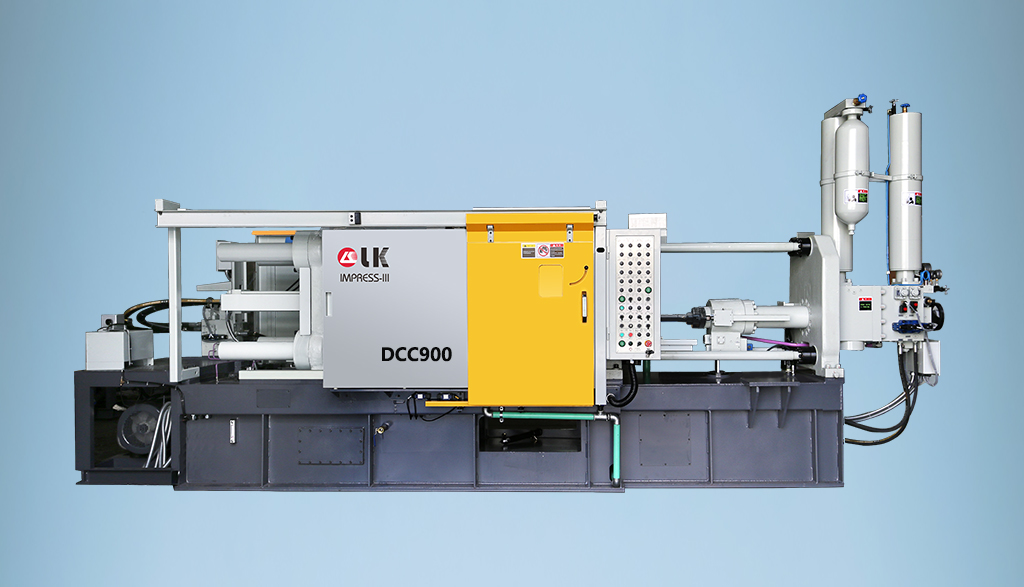
2024-09-19 14:16:15 LK Cold Chamber Die Casting Machine DCC900 Locking Force: 9000KN Die Height: 400-1000mm Space Between Tie Bars: 930x930mm Shot Weight: 13.5Kg Casting Area Max:2250c㎡
More -
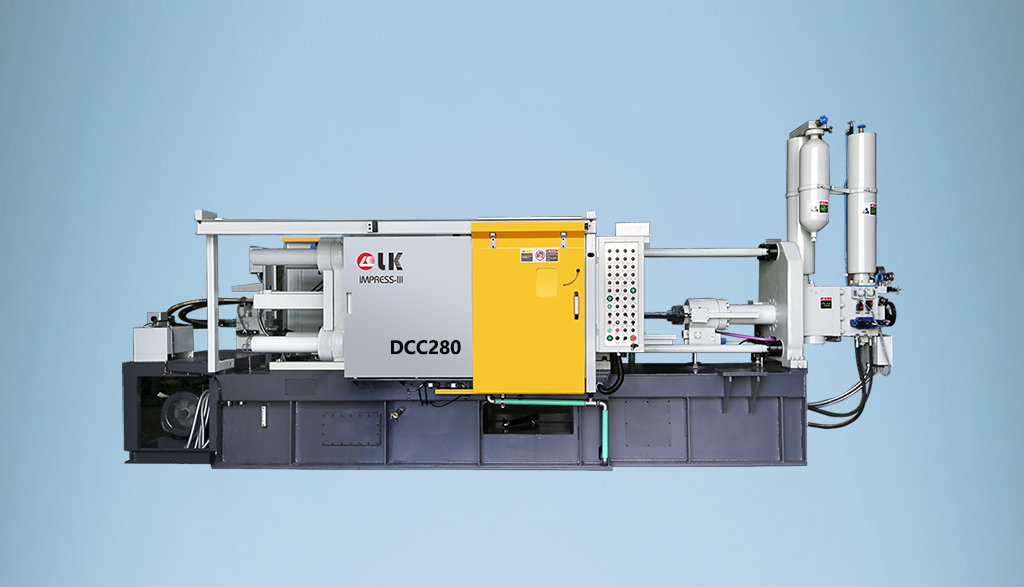
2024-09-19 14:11:06 LK Cold Chamber Die Casting Machine DCC280 Locking Force: 2800KN Die Height: 250-650mm Space Between Tie Bars: 560x560mm Shot Weight: 2.9Kg Casting Area Max:700c㎡
More -
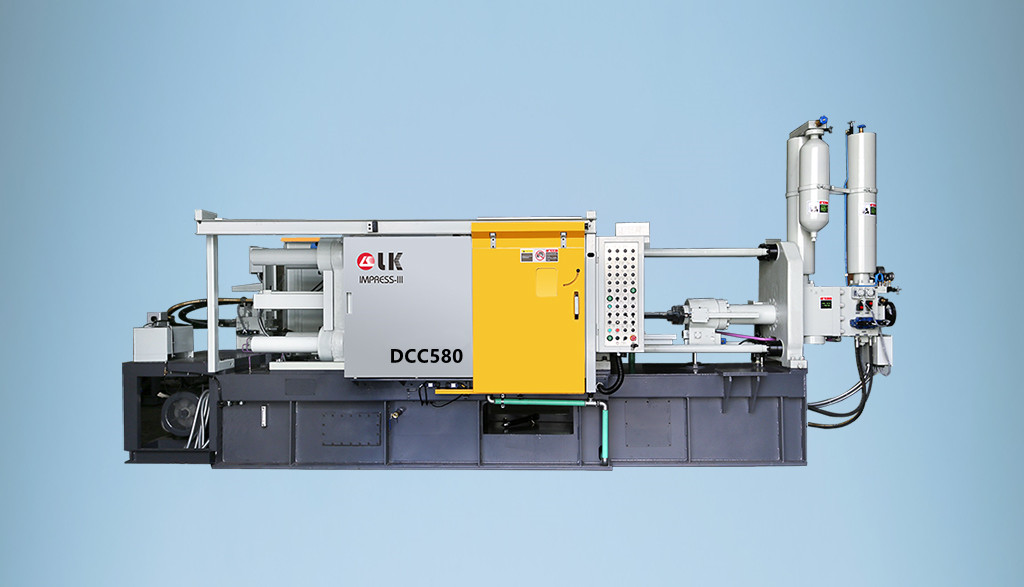
2024-09-19 10:23:07 LK Cold Chamber Die Casting Machine DCC580 Locking Force: 5000KN Die Heigh: 350-850mm Space Between Tie Bars: 760x760mm Shot Weight: 6.9Kg Casting Area Max:1250c㎡
More -
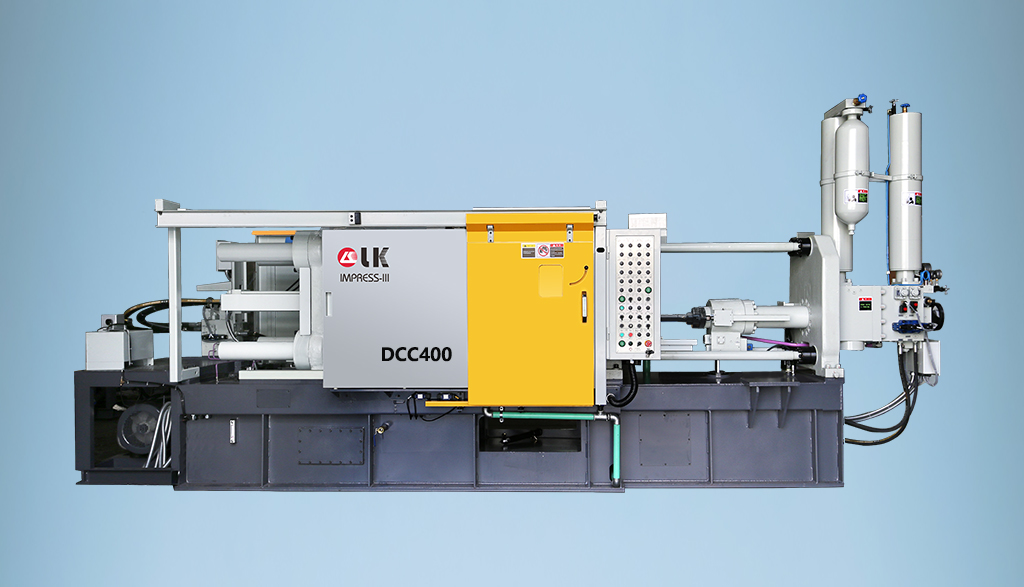
2024-09-19 10:11:20 LK Cold Chamber Die Casting Machine DCC400 Locking Force: 4000KN Die Height: 300-700mm Space Between Tie Bars: 669x669mm Shot Weight: 4.7Kg Casting Area Max:1000c㎡
More

